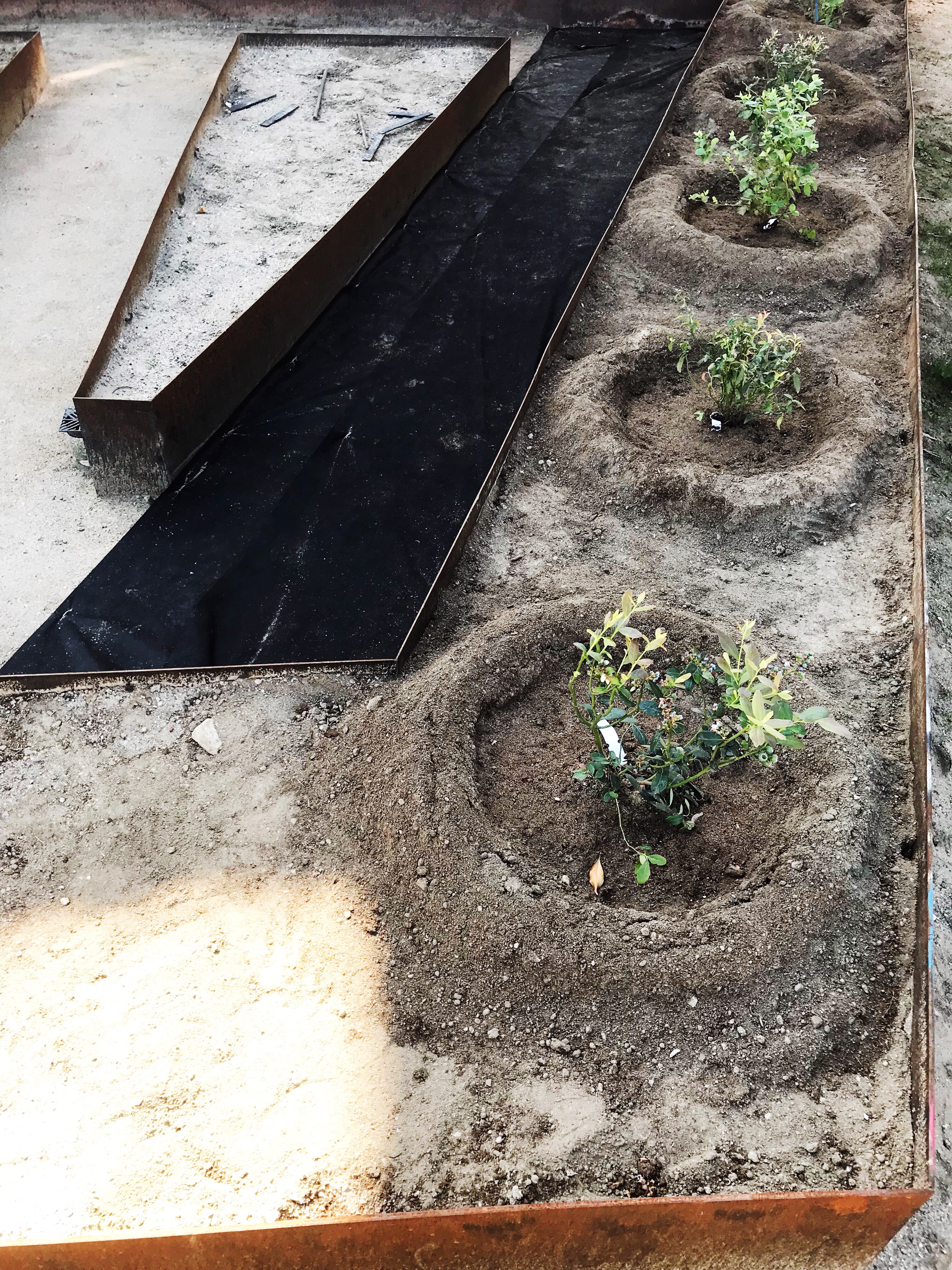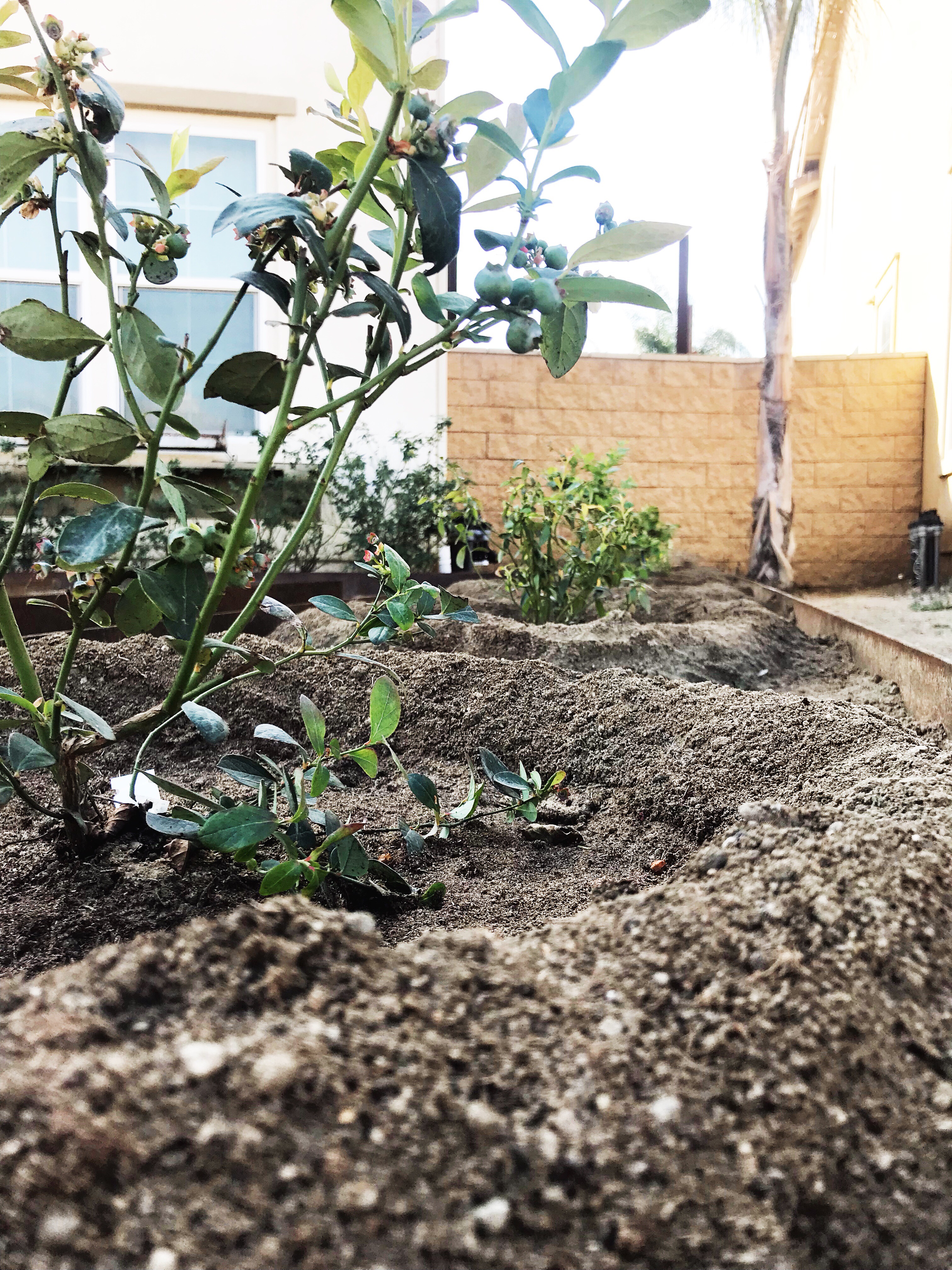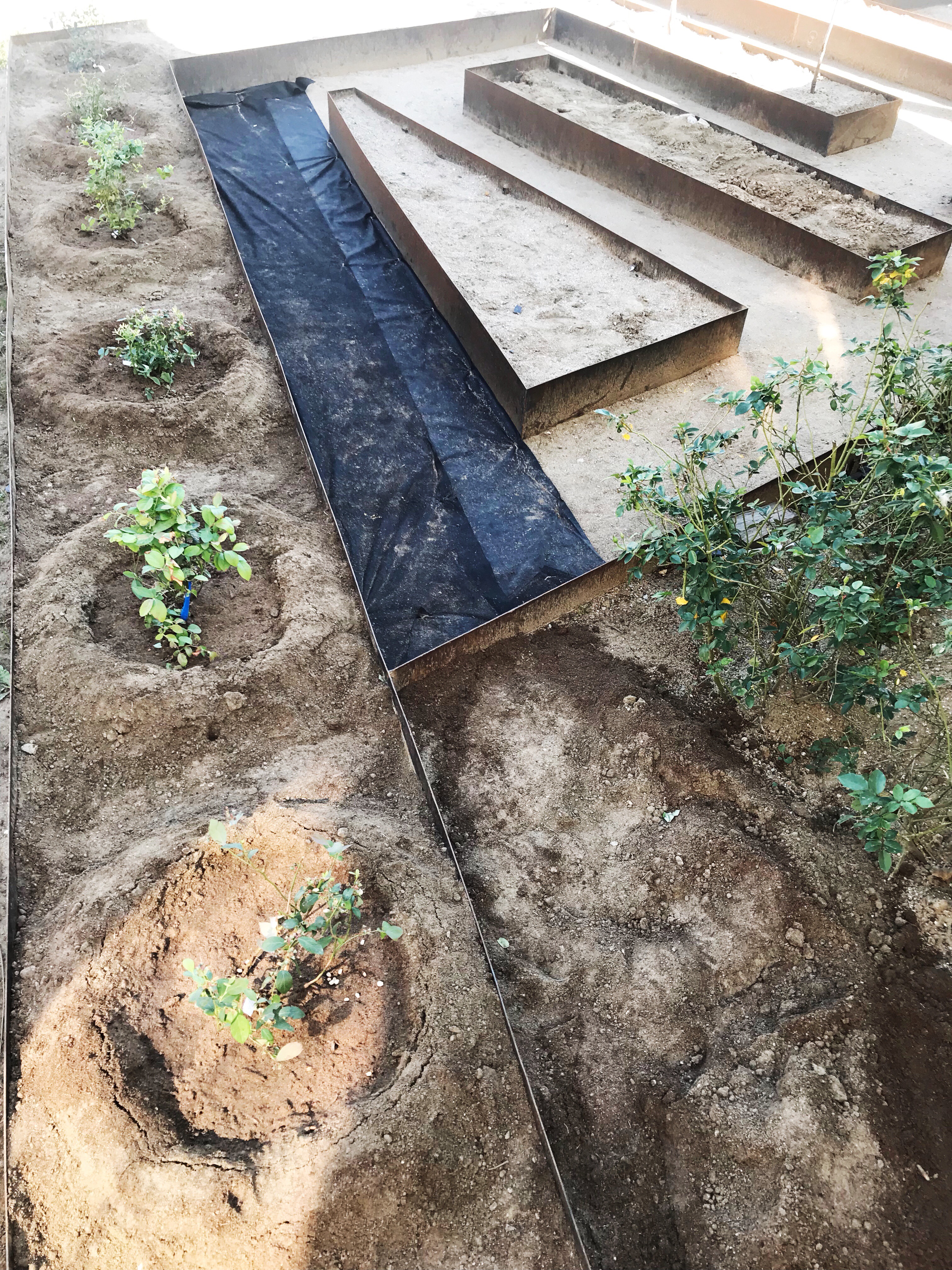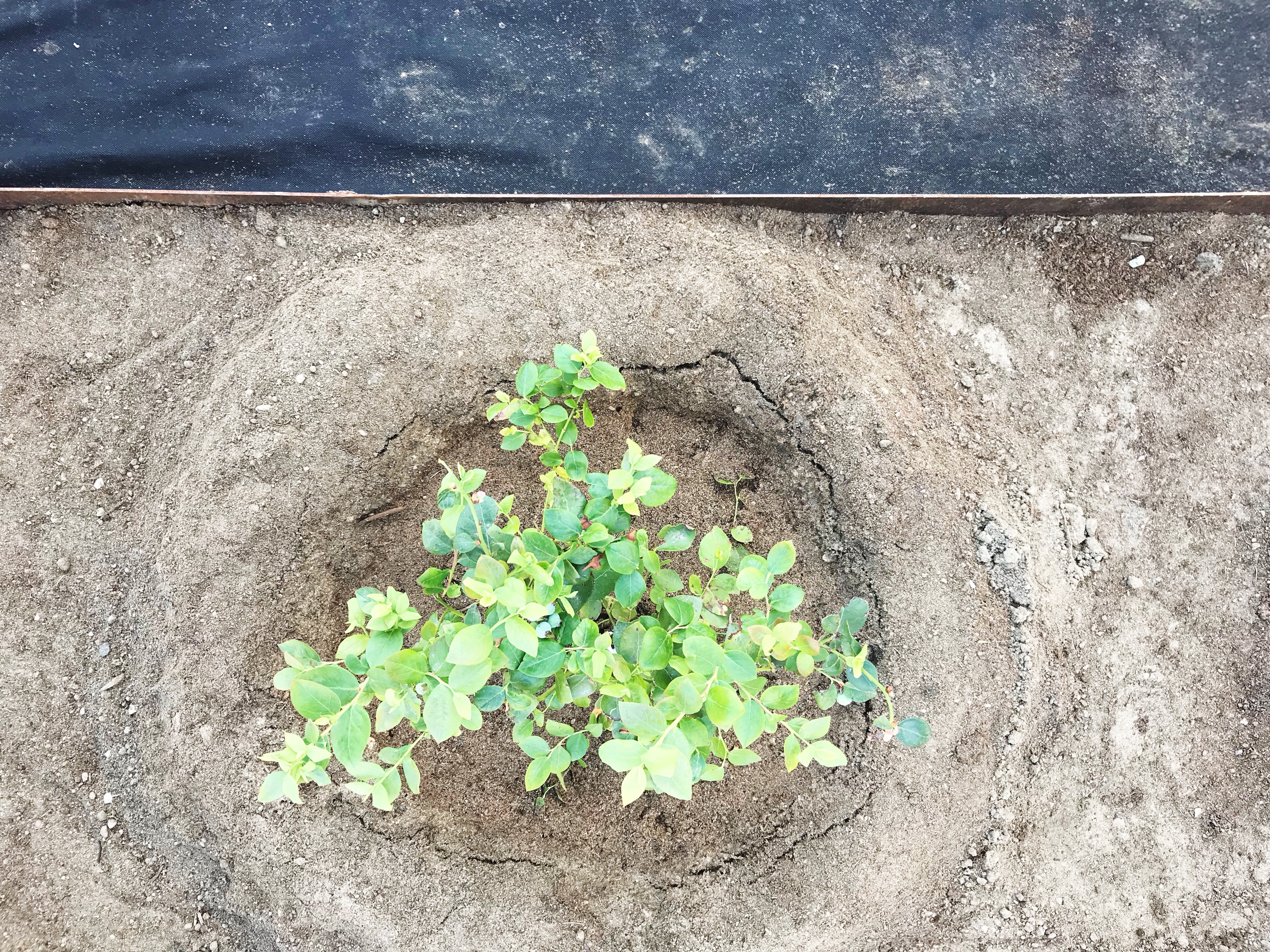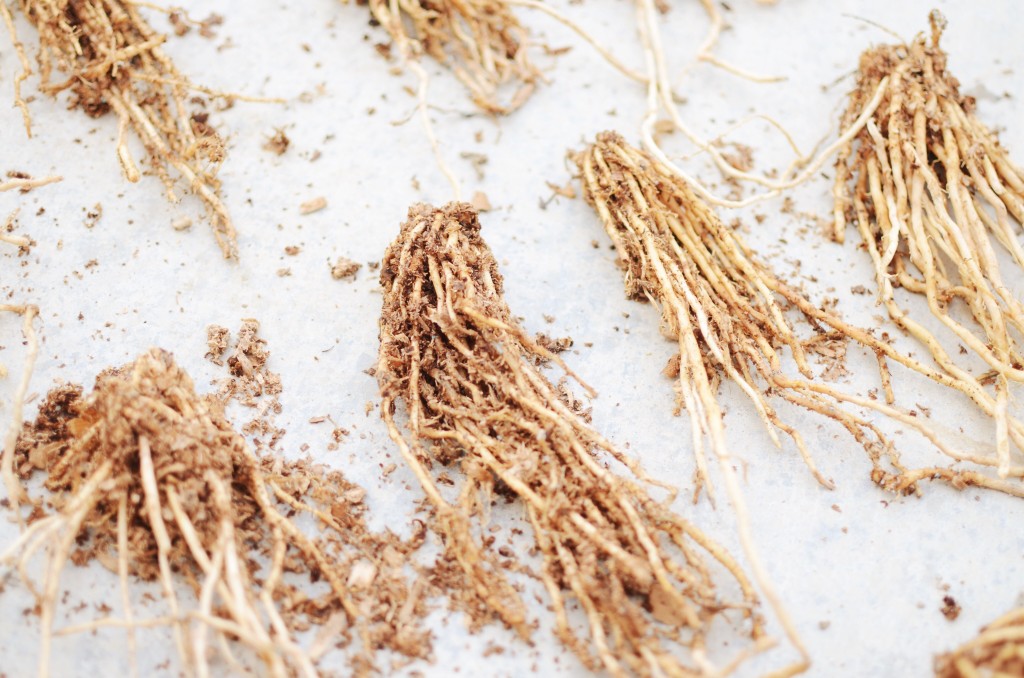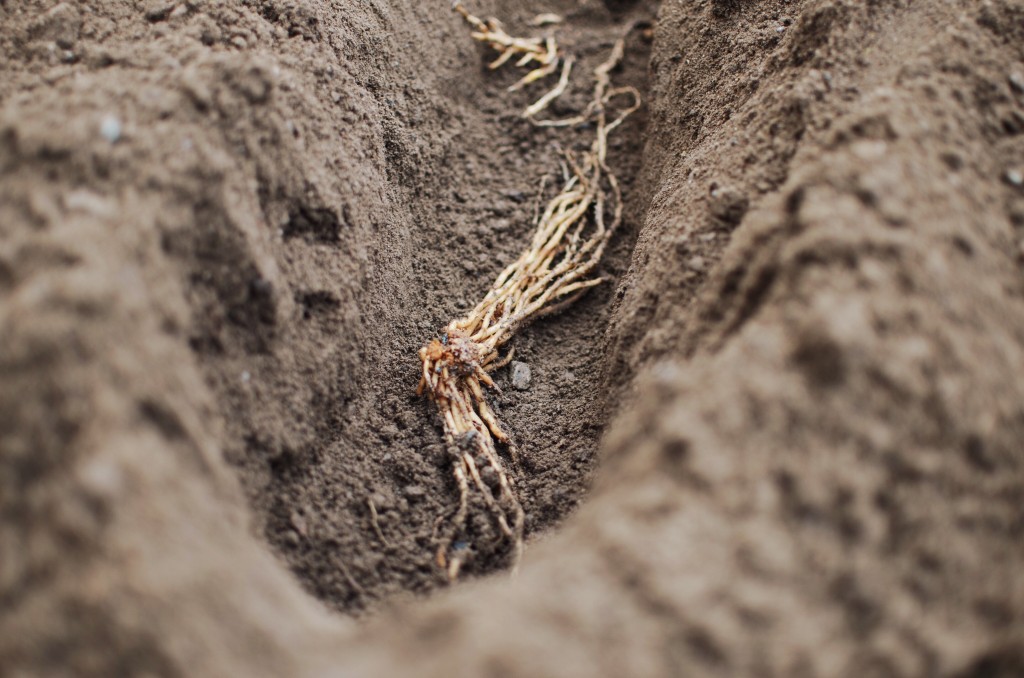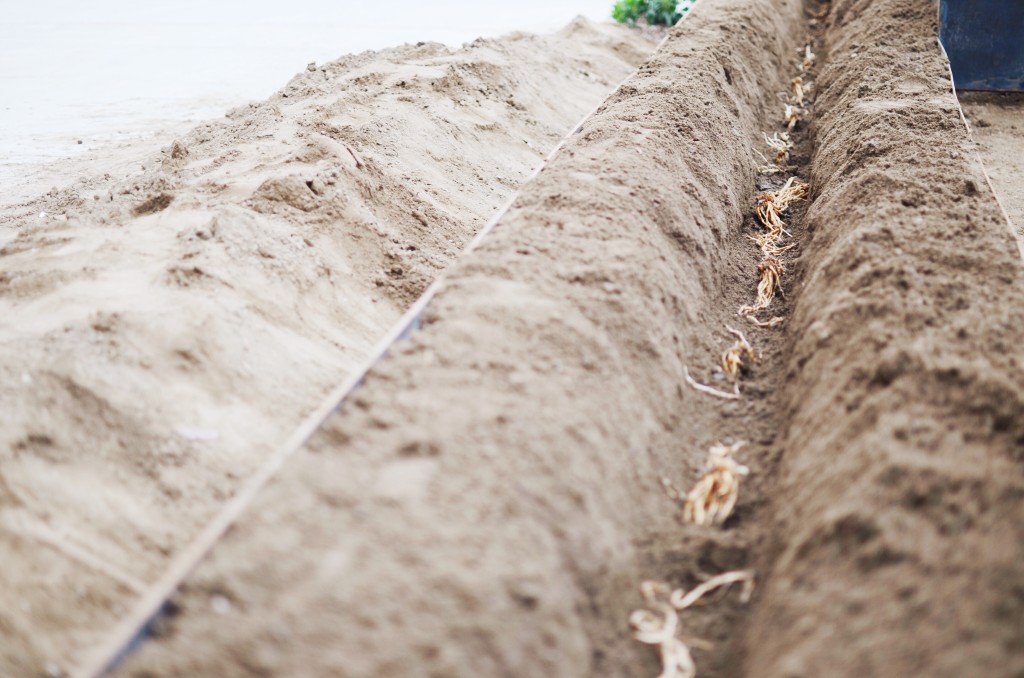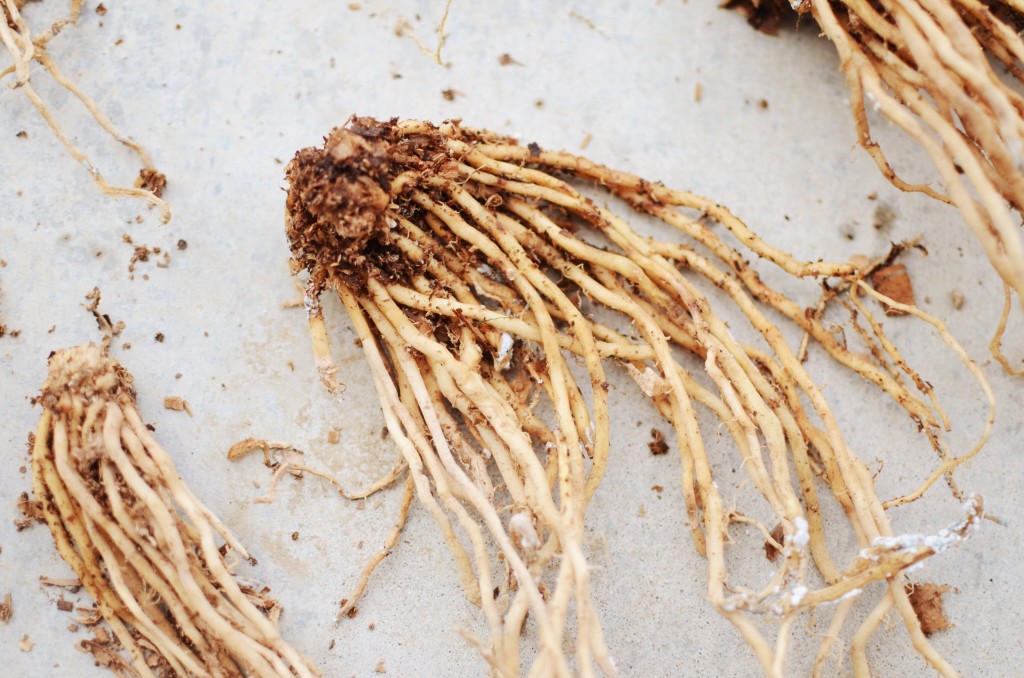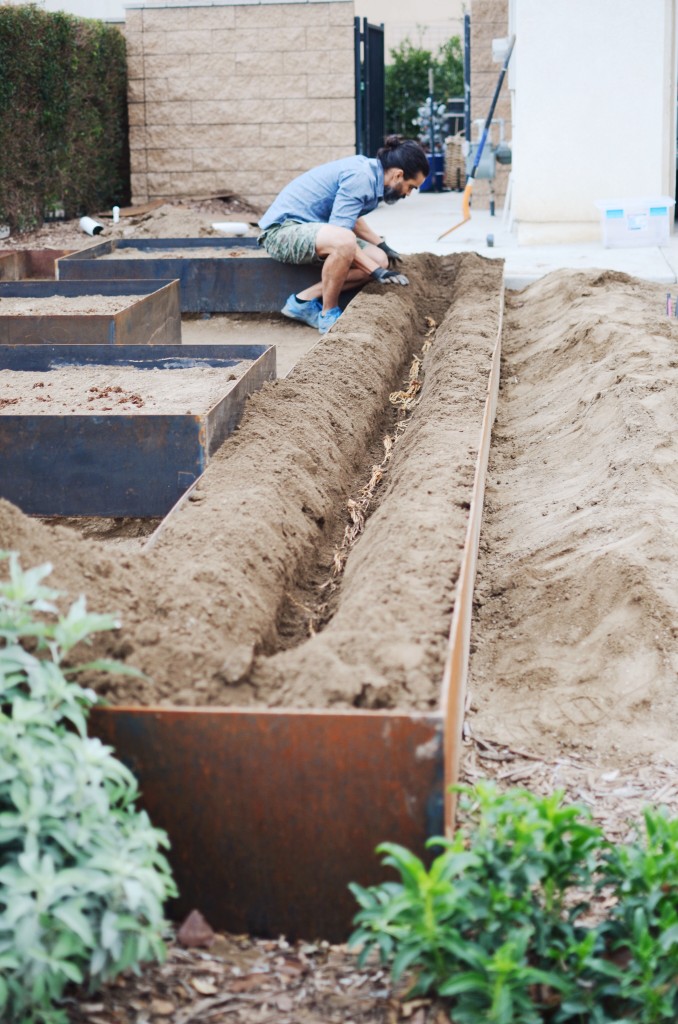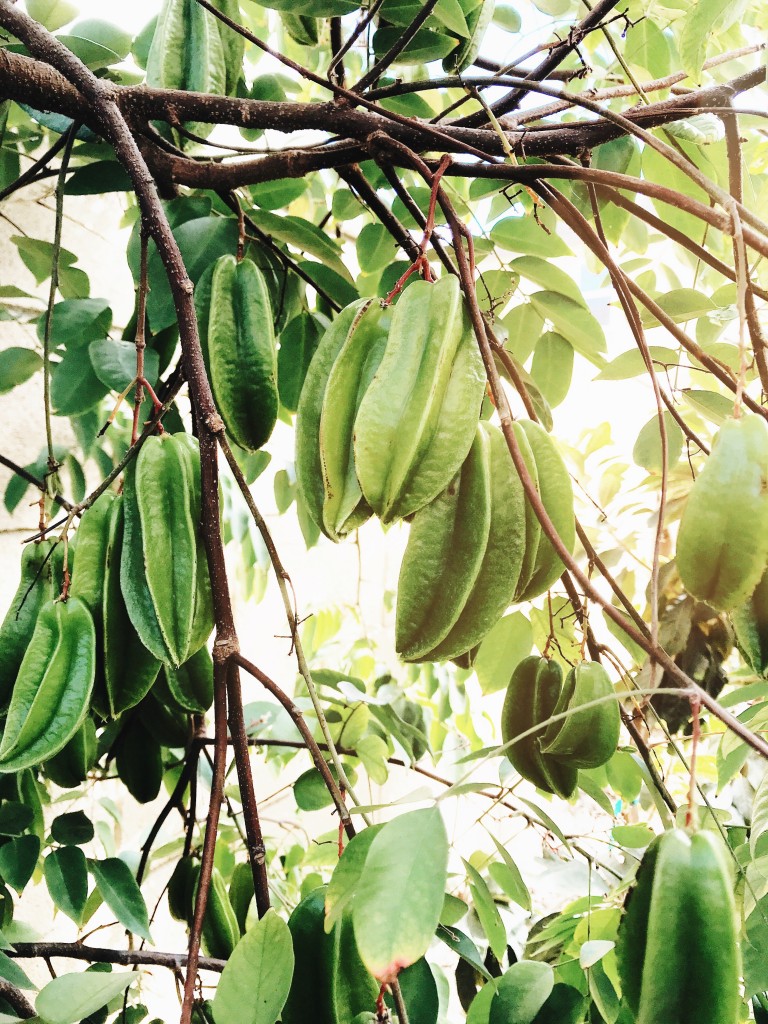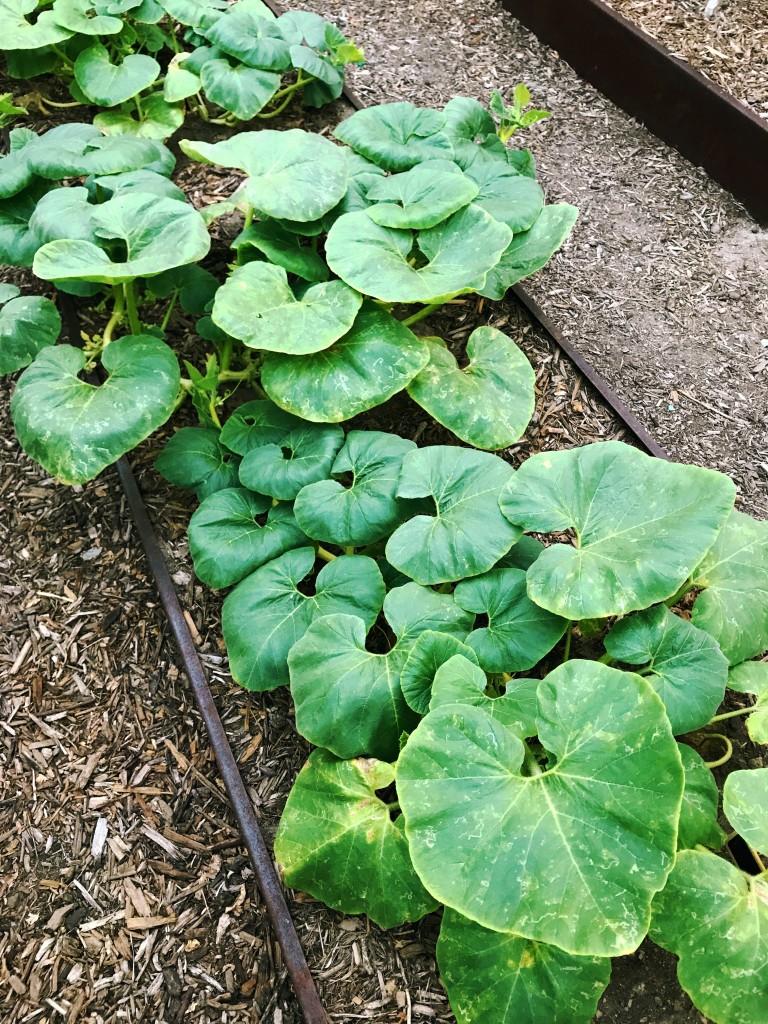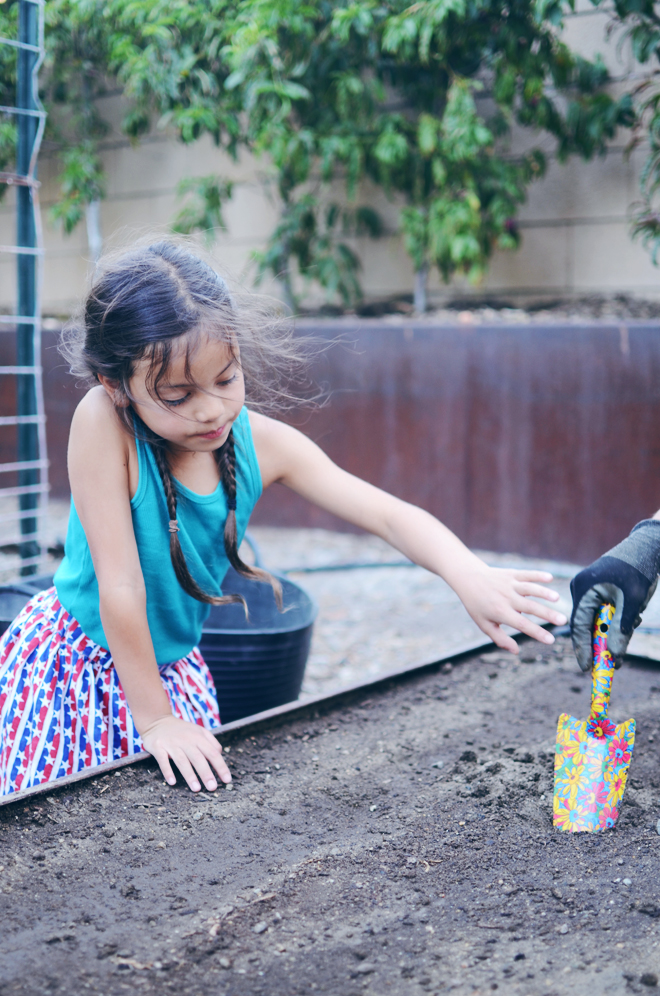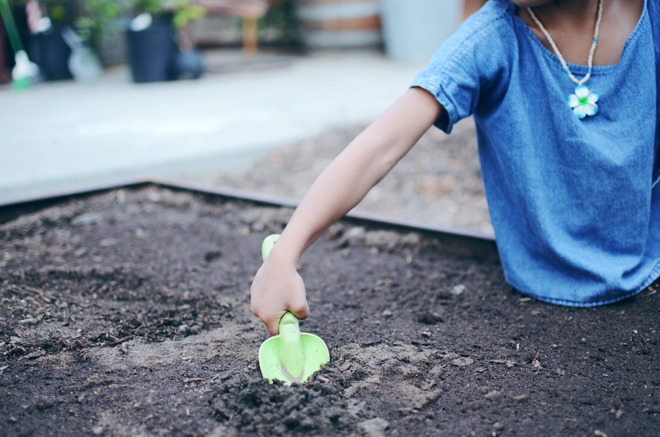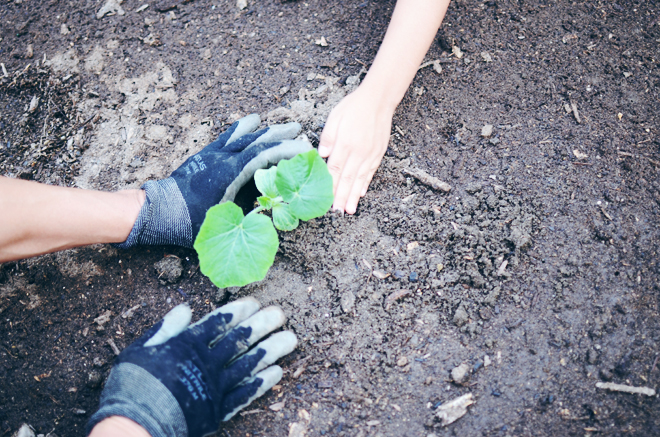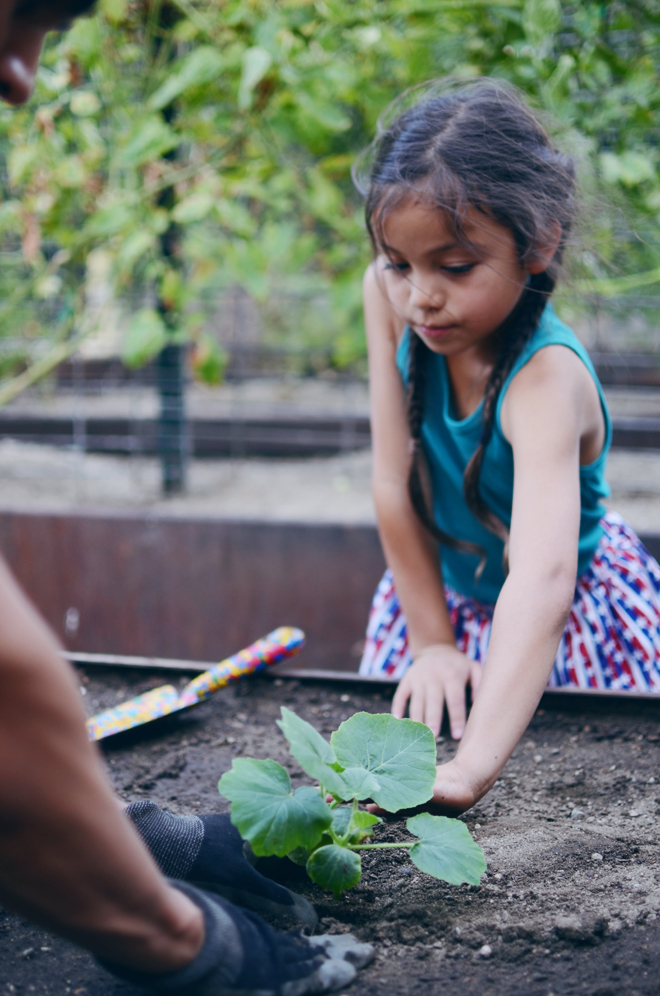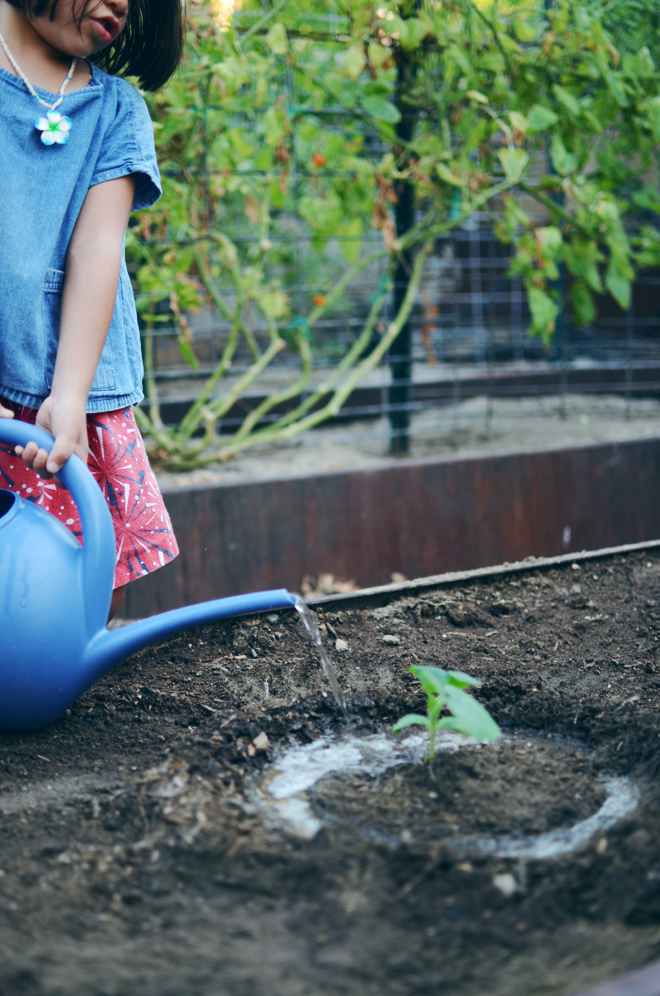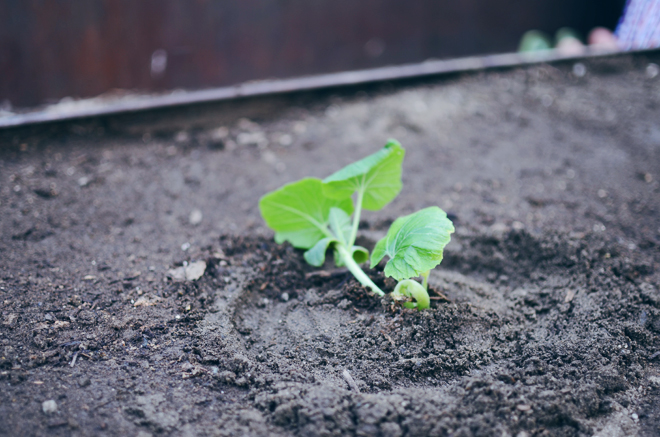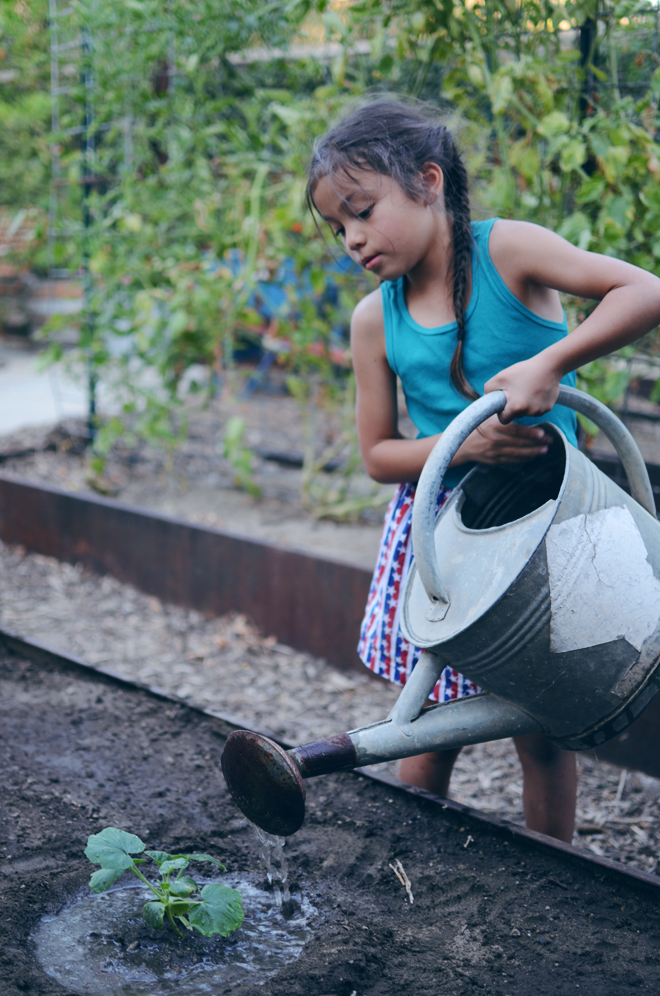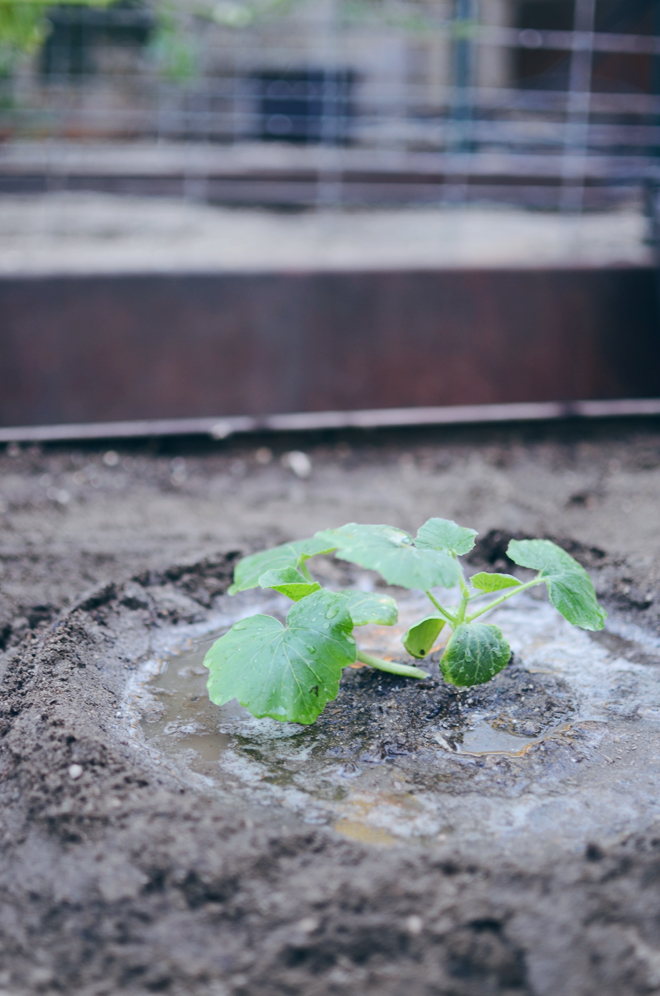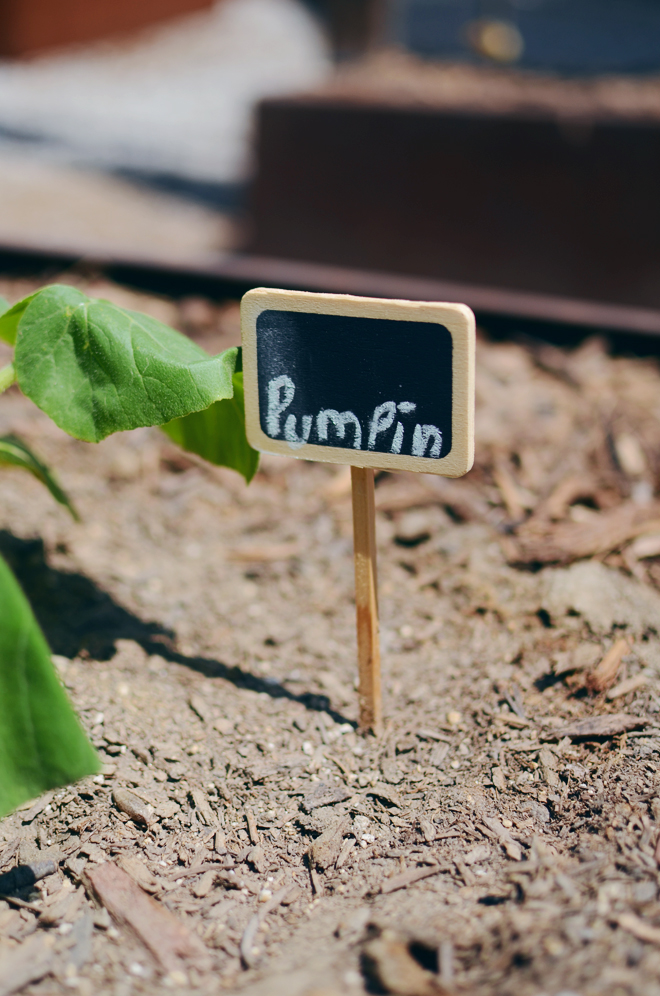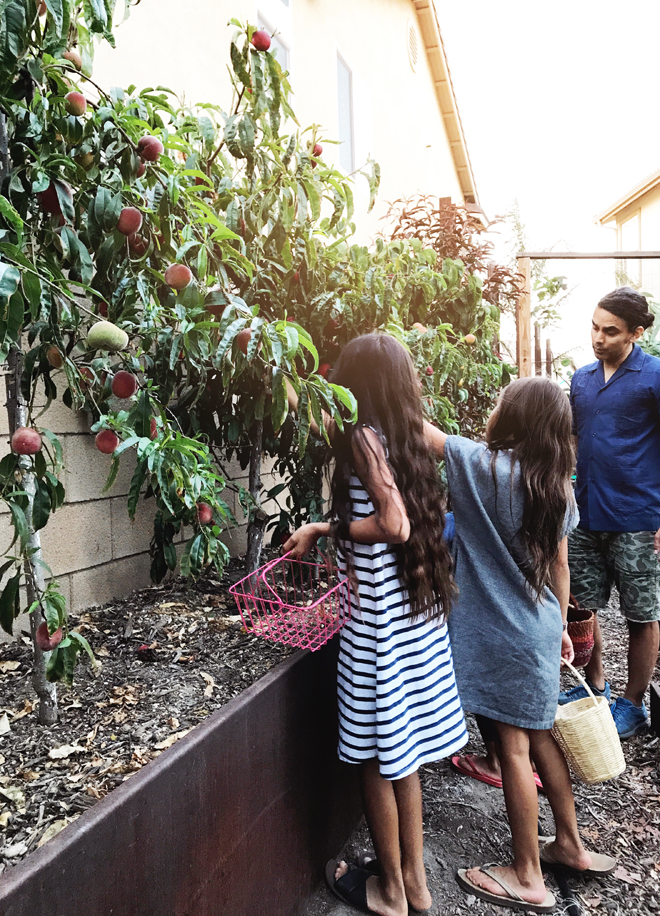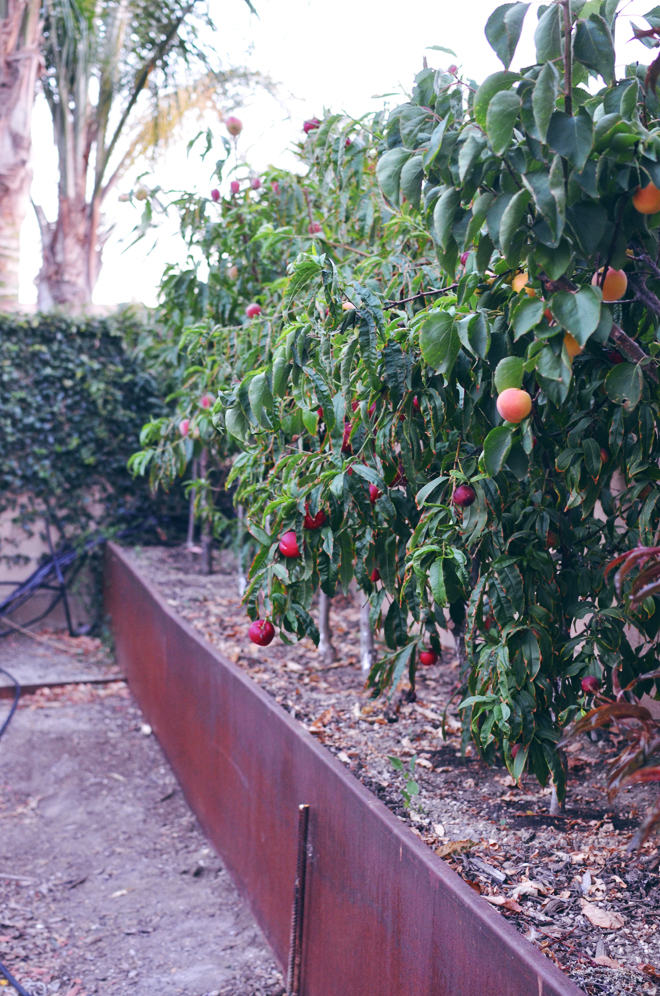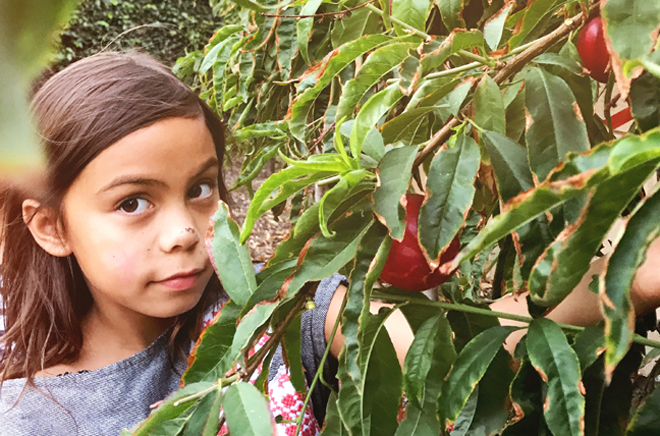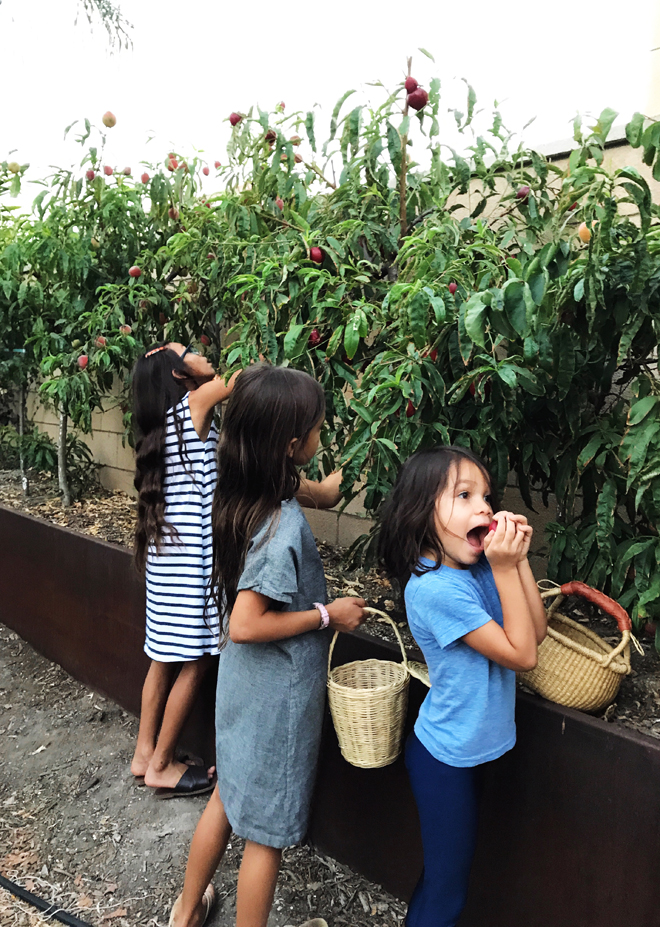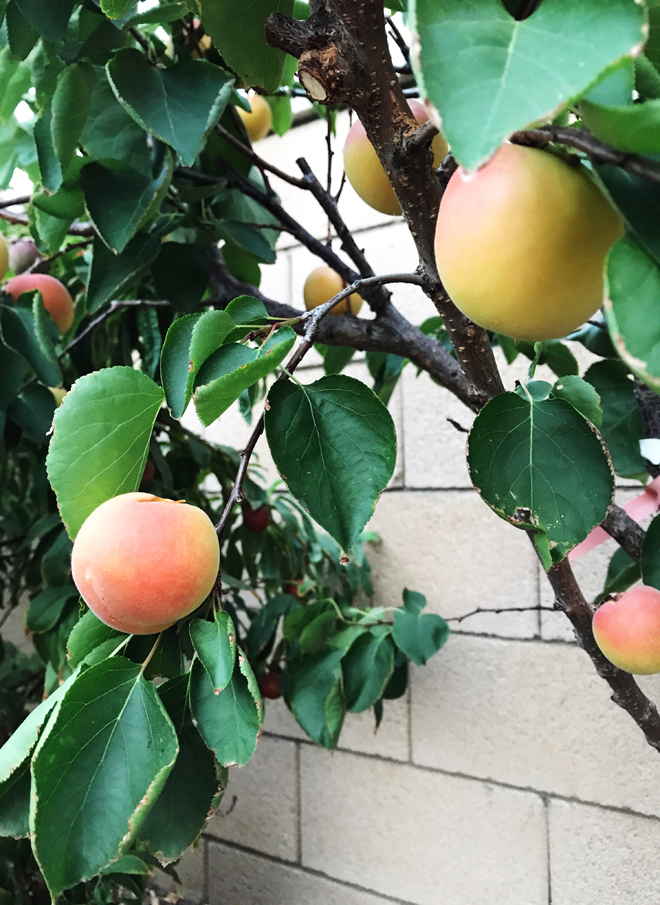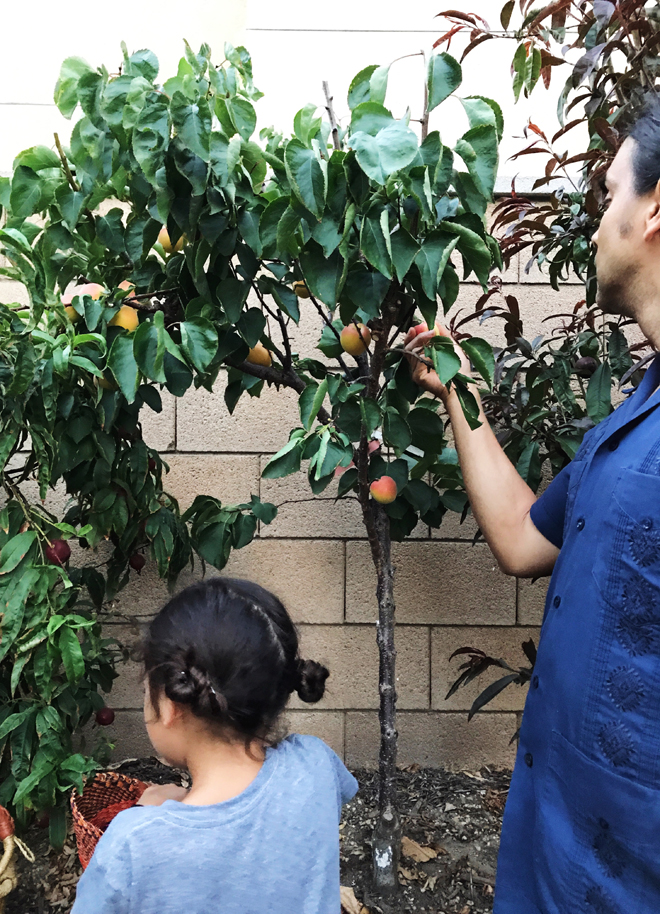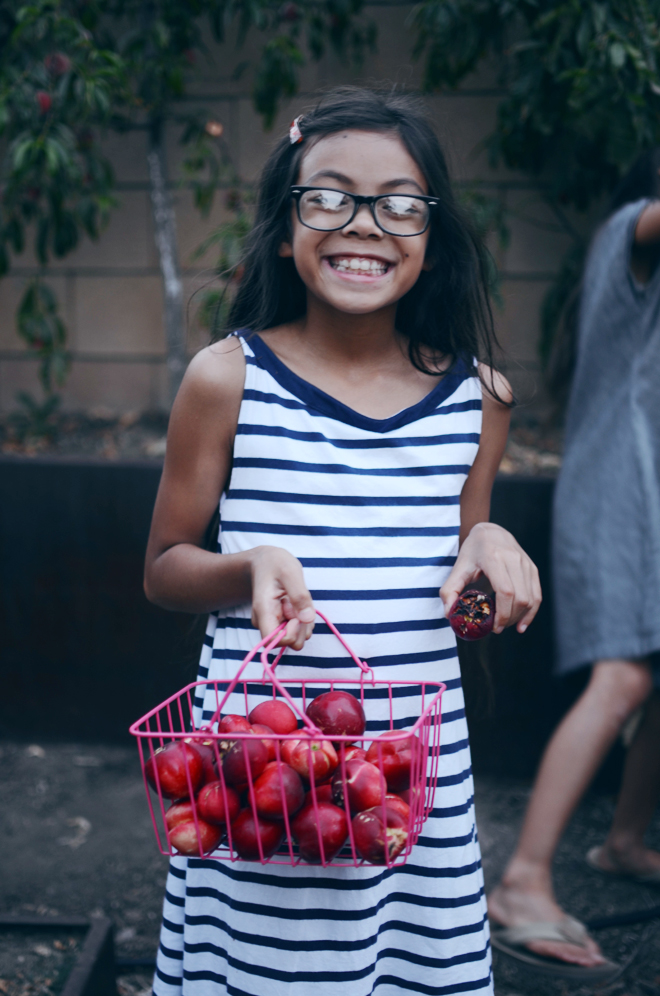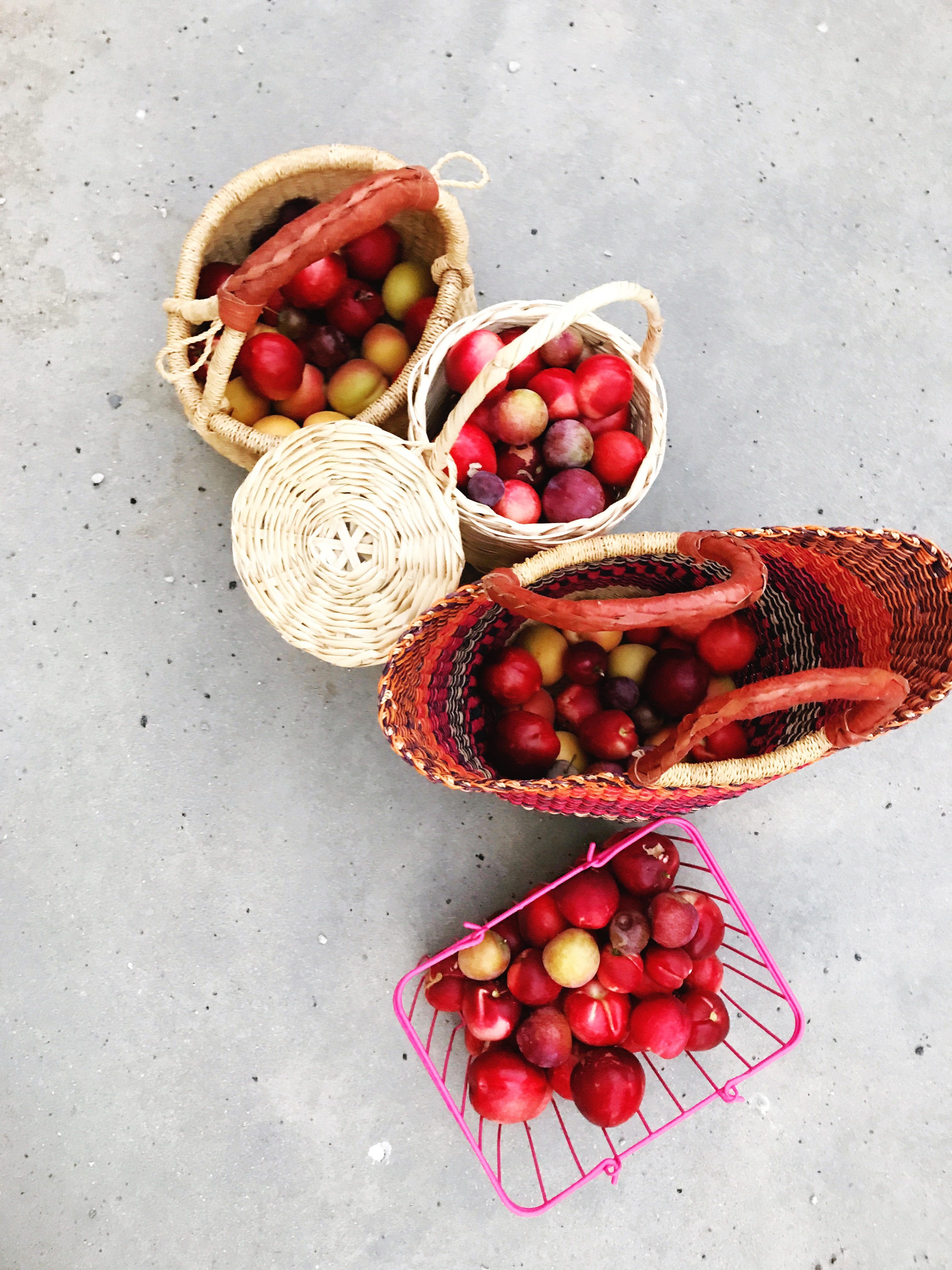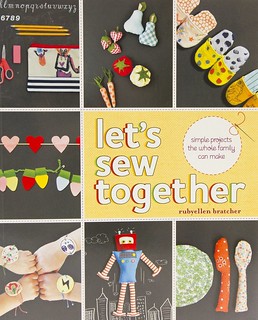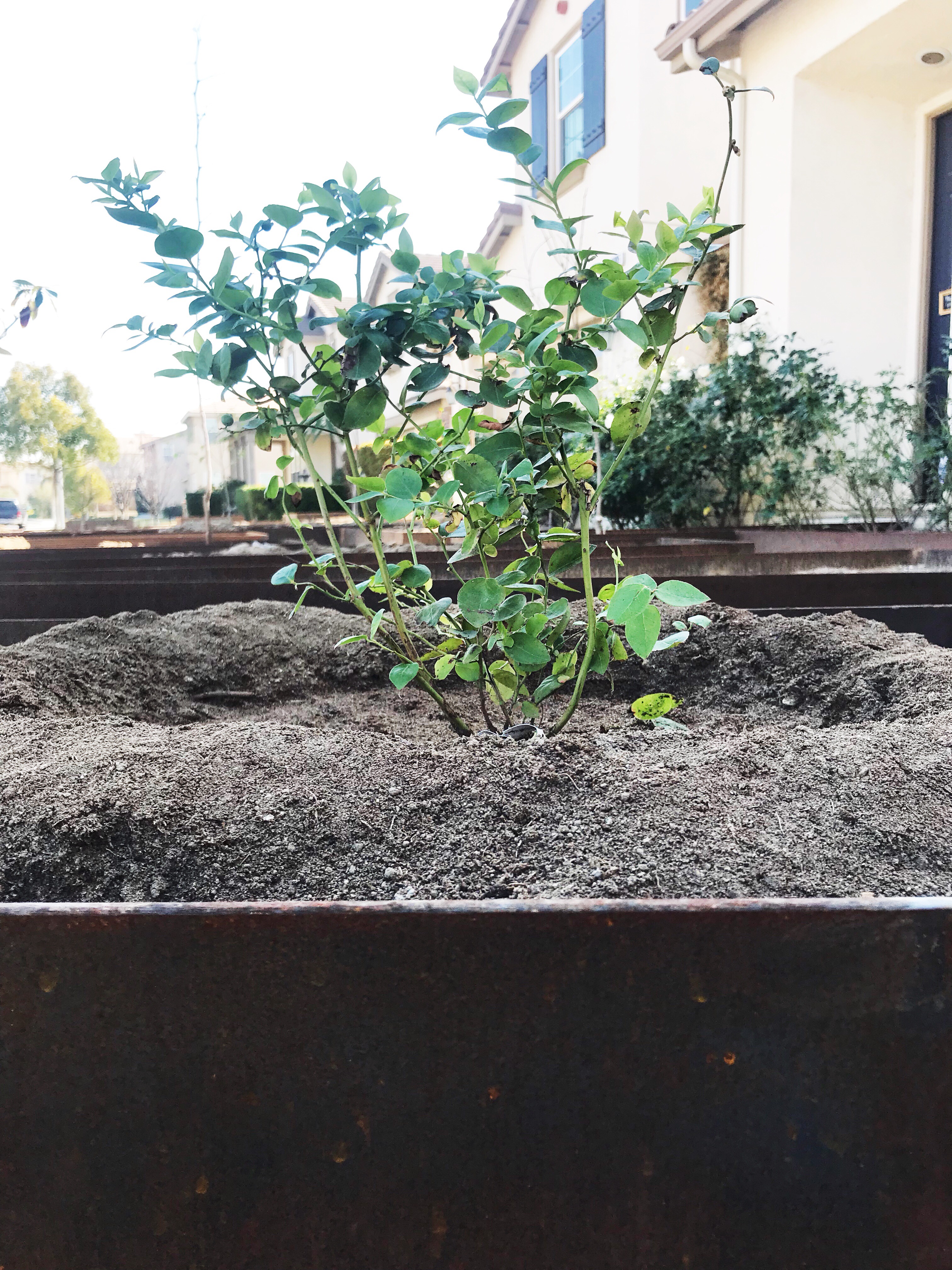
It is recommended to grow blueberries in an acidic soil and it can be easier to control the acidity by growing them in containers.
We grew blueberries in containers a few years back and they thrived (see the post here). They were super easy to grow and the girls loved them. However, so did the birds. These feathered pests would snatch them up BEFORE they even turned blue! With such a low production of blueberries, it was an unwinnable battle, as the birds wouldn’t leave us with much.
Then, we tried a variety of defenses. We tried bird netting (but the birds would somehow get in… but couldn’t get out (those were uncomfortable moments). Then we tried wrapping chicken wire but the wire ends are quite sharp and ornery (those too were uncomfortable moments). In the end, it required too much time and work, so we gave up on them.
Now that our edible gardening has ventured to the front yard, we’ve planted them in the ground along our front yard border. Our neighbor is notorious for overwatering his front lawn and prior to our front lawn redesign, his excessive watering lead to the killing of one tree we had and stunting the growth of another. As a result, we needed something that didn’t mind moisture. So, the blueberries seem to be like a good fit. Furthermore, we’re hoping that they’ll grow large enough so that our expectations for blueberries can co-exist with the birds’.
To get the acidity in the soil, after digging the hole, the girls and I used a 1:1 ratio of peat moss to native soil and backfilled. (I was able to get a large bale of peat moss at a local bulk soil company.) For the in-ground method, I was helped through some University of Maine videos online.
Gardening involves so much trial and error, so only time will tell how effective these strategies will work!

